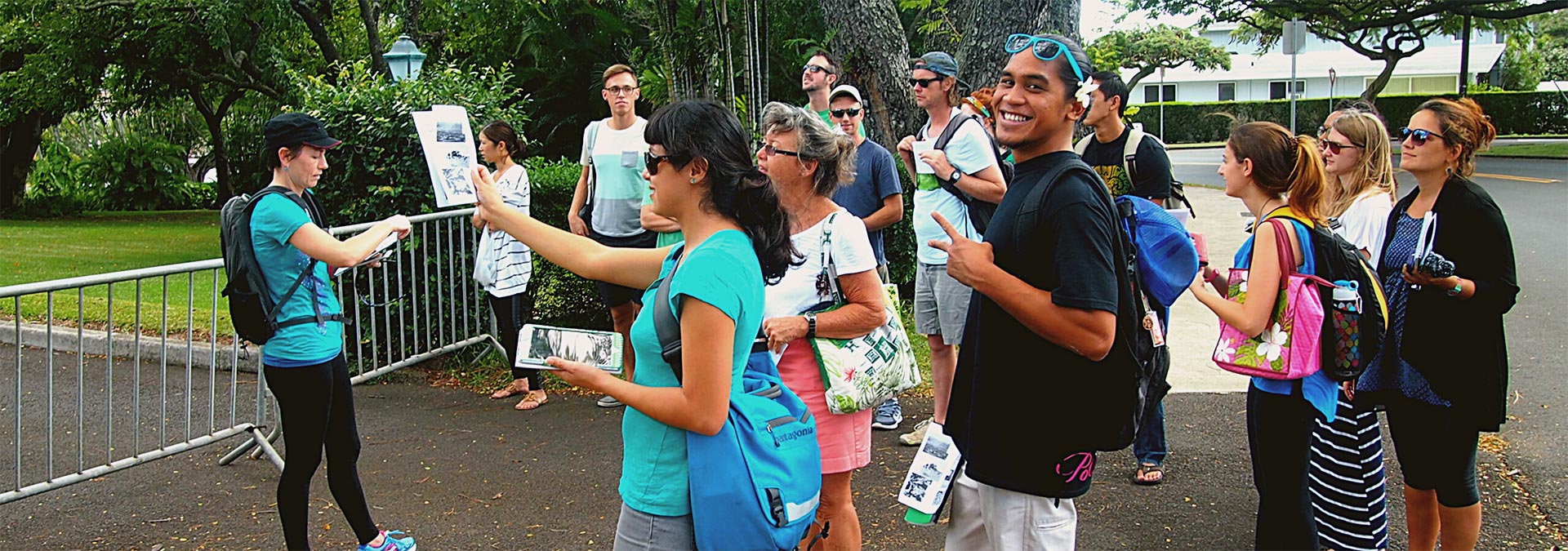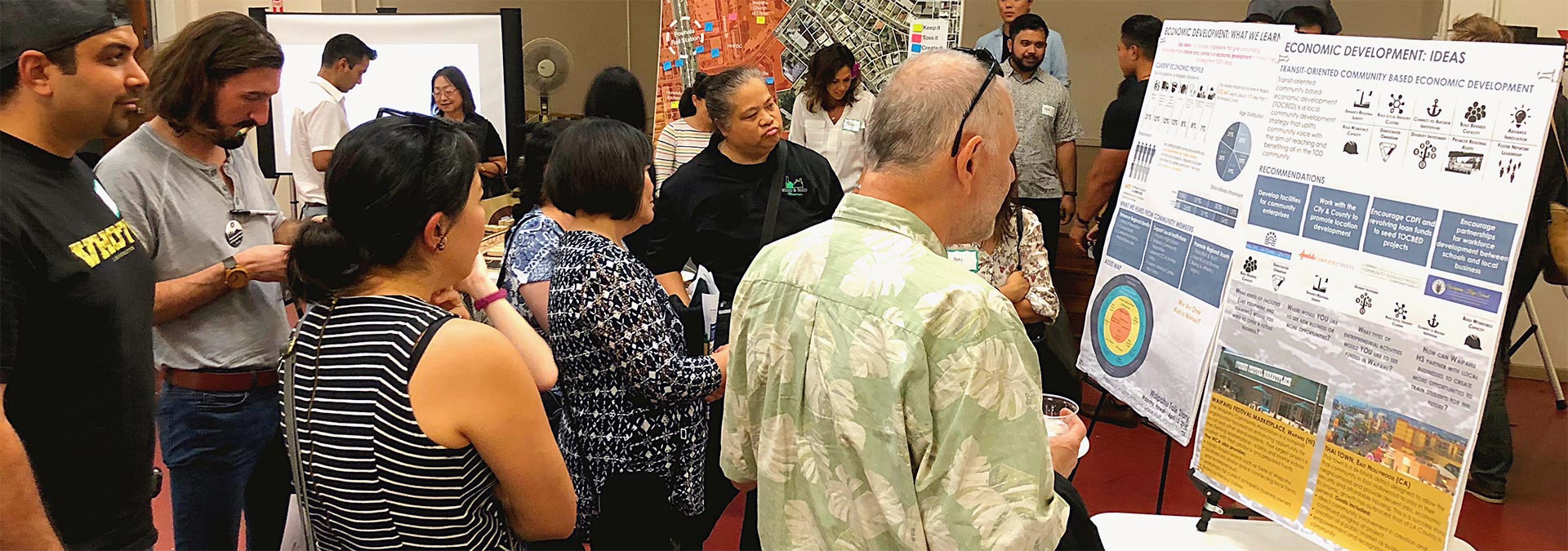The Department of Urban and Regional Planning at the University of Hawaiʻi at Mānoa is a professional program, fostering a multidisciplinary set of intellectual and practical tools, and enabling practitioners to chart the future in an age of uncertainty. We strive to improve the quality of life for both present and future generations – locally and globally – through planning, public policy, and social collaboration. Our academic program emphasizes theory, methodology, and practice.
Degrees and Certificates
- Master of Urban and Regional Planning (MURP)
- PhD in Urban and Regional Planning
- Global Environmental Science and Urban and Regional Planning Combined Bachelor’s and Master’s
- Certificate in Planning Studies
- Professional Certificate in Urban and Regional Planning
- Disaster Management and Humanitarian Assistance Certificate








